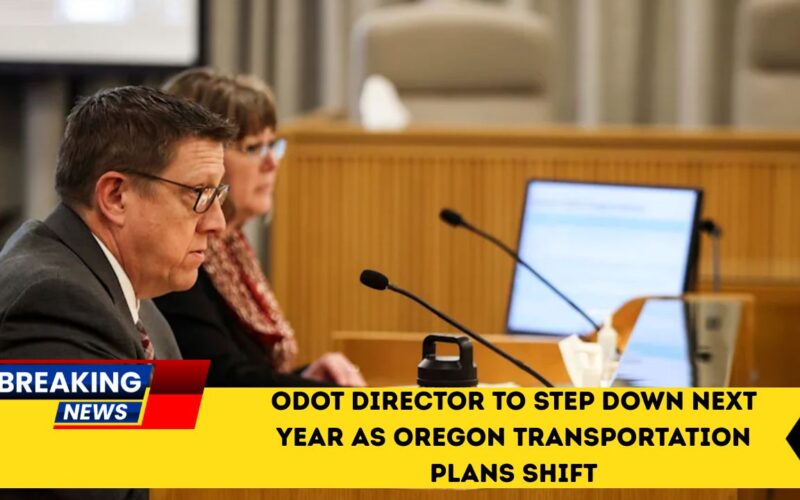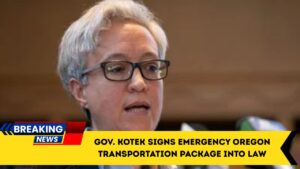The Oregon Department of Transportation (ODOT) today confirmed that its long-time director, Kris Strickler, will step down from his post on January 2 , 2026 after more than six years in charge.
The decision marks a significant leadership transition for the 4,500-staff state agency just as key transportation plans and funding issues shift underfoot.
Strickler, who began his tenure in the fall of 2019, becomes the second-longest-serving ODOT director in state history.
In announcing his departure, he noted that with major funding for maintenance and operations now secured, the agency is ready to embrace new leadership for its “next chapter.”
At the same time, the agency named Lisa Sumption, current Director of Oregon Parks and Recreation Department (OPRD), as interim director beginning on the same date.
Overview of the Transition
This leadership change occurs amid several major developments for ODOT:
- The agency has just avoided immediate cuts thanks to a special legislative session and newly-approved transportation funding.
- Major infrastructure projects (including the Interstate 5 Rose Quarter improvements and the Interstate Bridge Replacement Program) remain under pressure because of rising costs and federal funding uncertainty.
- ODOT’s multi-modal vision for the state (car, transit, bike/walk) continues to expand, but now enters a new leadership phase.
Key Facts at a Glance
| Item | Detail |
|---|---|
| Director stepping down | Kris Strickler |
| Effective date of departure | January 2, 2026 |
| Interim director | Lisa Sumption |
| Agency size | ~ 4,500 employees |
| Tenure length | ~ 6 years (fall 2019 to Jan 2026) |
| Historical rank of tenure | Second-longest in ODOT history |
| Key challenge | Transportation funding & project backlog |
| Search for permanent director | National search underway by Governor & Commission |
Why Now? Strickler’s Explanation
In his announcement, Strickler noted that the agency has secured essential funding for maintenance and operations, suggesting a “right moment” for new leadership to take over.
He praised ODOT staff’s dedication to serving Oregonians and expressed confidence that the agency will continue to thrive under fresh leadership.
Governor Tina Kotek thanked Strickler for his service, calling him “a dedicated leader who has not shied away from embracing challenges.”
She emphasised that his tenure guided the agency through wildfires, the COVID-19 pandemic and a major funding crisis — all while advancing multimodal transportation strategies.
What This Means for Oregon Transportation
1. Leadership Shift
Strickler’s departure opens the door for potentially new priorities and management style at ODOT.
With Sumption stepping in temporarily, the Oregon Transportation Commission (OTC) and Governor will lead a national search for a permanent director — indicating possible changes in agency goals, initiatives, and partnerships.
2. Funding and Project Implications
Although recent legislation secured a short-term budget lifeline, the long-term structural funding for roads, transit and multimodal options remains unresolved.
The next director will face the dual challenge of delivering existing commitments while tackling revenue shortfalls, inflation-driven cost increases, and project delays.
3. Strategic Evolution
Under Strickler, ODOT expanded its approach beyond traditional highways to include transit, walking, biking and freight.
With leadership change comes an opportunity to reassess priorities — including urban corridor improvements, rural connectivity, resilience to natural disasters and climate adaptation.
The news of Kris Strickler’s upcoming departure marks a pivotal moment for Oregon’s transportation agency.
As ODOT navigates an era of shifting funding, rising costs and evolving infrastructure needs, the leadership transition signals both an end of one chapter and the beginning of another.
With Lisa Sumption stepping in as interim director and a national search for a permanent leader underway, Oregon’s next transportation era will be defined by how this agency adapts to new pressures and opportunities.
The stakes remain high — for roads, transit, connectivity and the future of travel across the state.




